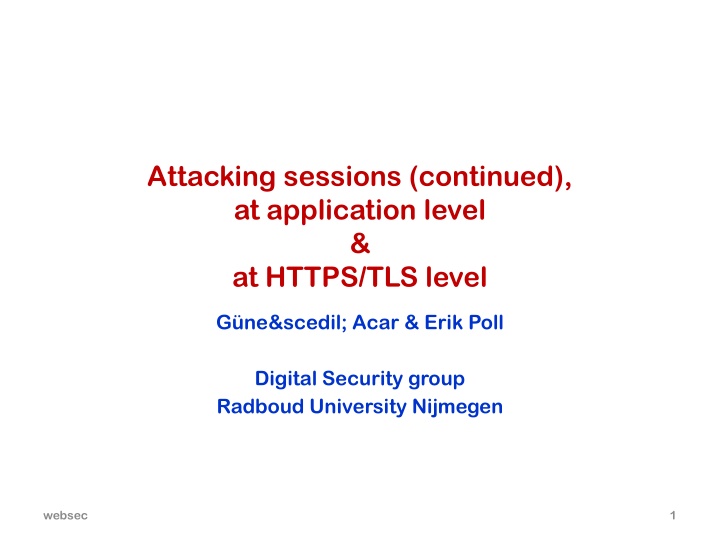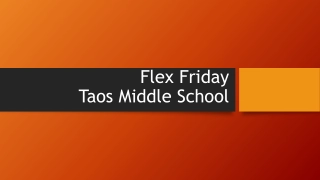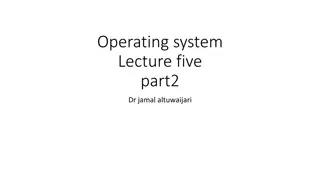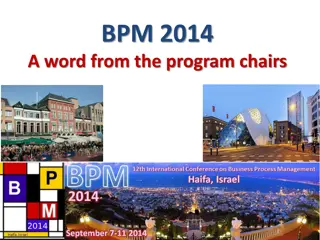
Next Level Web Security: Session Attacks & Countermeasures
Uncover the dangers of session attacks at application and HTTPS/TLS levels, learn how to protect against CSRF vulnerabilities, and explore effective countermeasures for secure web browsing. Stay ahead of cyber threats with essential insights from Radboud University Nijmegen's Digital Security group.
Download Presentation

Please find below an Image/Link to download the presentation.
The content on the website is provided AS IS for your information and personal use only. It may not be sold, licensed, or shared on other websites without obtaining consent from the author. If you encounter any issues during the download, it is possible that the publisher has removed the file from their server.
You are allowed to download the files provided on this website for personal or commercial use, subject to the condition that they are used lawfully. All files are the property of their respective owners.
The content on the website is provided AS IS for your information and personal use only. It may not be sold, licensed, or shared on other websites without obtaining consent from the author.
E N D
Presentation Transcript
Attacking sessions (continued), at application level & at HTTPS/TLS level G neş Acar & Erik Poll Digital Security group Radboud University Nijmegen websec 1
Recap: sessions at application level 1. page.html https://bank.nl/page.html bank.nl server 2. pay request <a href= https://bank.nl/pay?... >pay</a> Pay request needs to include session information aka session token(s) Two ways to do this: 1. Bank provides user with webpage page.html that includes this info as URL parameter (eg below) or in body of HTTP request https://bank.nl/pay?sessionID=XYZ123&amount=1.00&dest=12.34.56 2. Bank sets a cookie and browser automatically adds this info websec 2
NB: identification vs authentication Session information serves two distinct purposes: 1. identification who is the web server talking to 2. authentication verifying that this person is who they claim to be Could Brightspace use your student-nr for this? For 1, but not for 2 Different pieces of information can be used for 1 and for 2 websec 3
Attack 1) CSRF - the downside of cookies https://bank.nl <a href= https://bank.nl/pay?... >pay</a> pay request bank.nl server https://mafia.com pay request <a href= https://bank.nl/pay?... >pay</a> Browser attaches cookie to cross-domain requests from any site websec 4
Countermeasure: (anti)CSRF token https://bank.nl page.html with fresh token <a href= https://bank.nl/ pay?token=32451... >pay</a> pay request plus fresh token bank.nl server https://mafia.com pay request <a href= https://bank.nl/pay?... >pay</a> websec 5
Other countermeasures against CSRF Let client re-authenticate before important actions eg. when resetting their password, or making big bank transfer Set SameSite flag for the cookie (since 2017) strict cookie never attached to cross-site requests lax cookie only attached to top-level GET requests i.e. GET requests which change the address bar to bank.nl (so not for loading an iframe from bank.nl on mafia.com) https://developer.mozilla.org/en-US/docs/Web/HTTP/Headers/Set-Cookie/SameSite Check Refer(r)er or Origin headers Browser includes these in HTTP requests to indicate where request is made from (eg mafia.com or bank.nl), so bank.nl can check which webpage made the request; but these headers may be absent Origin is just the domain, Referer the domain plus the path Let browser add Sec-Fetch-Site header to distinguish cross site requests (since 2019) websec 6
Attack 2) Stealing cookies with scripts (XSS) If attacker can malicious JavaScript into pages of bank.nl website, this code can inspect the cookies and send them anywhere on the internet, including to https://mafia.com Such an attack, called Cross Site Scripting (XSS) attacks will be discussed in next weeks Solution: cookie has be declared as HttpOnly This means the cookie is only used for sending along with HTTP requests & not accessible to scripts in the webpage websec 7
Attack 3) Stealing cookies as MitM HTTPS prevents eavesdropper from observing cookies (and other session info) HTTPS bank.nl But: active MitM attacker can so more... How can you do a MitM attack? 1. attacker on (wired/wireless) network 2. ISP 3. fake website eg. bank.ni websec 8
Stealing cookies as MitM 1. 2. User logs on to https://bank.nl Server sets session ID for bank.nl in cookie which is encrypted in HTTPS-traffic, so attacker cannot steal it User does their banking . User asks for unencrypted HTTP link (eg http://nu.nl) MitM attacker replies with a redirect to http://bank.nl Browser follows redirect and sends the bank s cookie over HTTP Bingo! Attacker has the cookie 3. 4. 5. 6. 7. Solution: set secure flag for cookie which disallows browser to ever send it over HTTP HTTPS HTTPS HTTP HTTP bank.nl websec 9
Recap: cookie flags The three cookie flags 1. secure Encrypting the cookie itself, when it is sent over HTTP, is pointless. Why? Attackers can simply replay a stolen encrypted cookie! 2. HTTPonlyinaccessible to scripts Confusing name: HTTP(S)Only would be better 3. SameSitenot added to links from different sites protect against three different attacker models 1. protects against eavesdropping and MitM 2. protects against XSS: client-side scripts injected into the real website (discussed in later lecture) 3. protects against malicious sites that link to a benign site (CSRF) only ever sent cookie over HTTPS, never over HTTP websec 10
Attacking HTTPS websec 11
What are we trusting? And for what? Certificate Authority (CA) eg CRL (certificate revocation list) Certificate Certificate for domain bank.nl issued by CA to bank. Public key XYZ bank.nl websec 12
TCB TCB = Trusted Computing Base TCB of a security control or security guarantee is everything (people, software, computers, ...) that we have to trust for that control or guarantee There will be different TCBs for different controls/guarantees websec 13
DV, OV and EV SSL certificates Certicate Authority (CA) can validate who is requesting a certificate for a domain in different ways: DV (Domain Validation) certificates Email check to validate that this is the owner of that domain, using whois information (eg via https://www.sidn.nl/whois) Free via Let'sEncypt since 2016 OV (Organisation Validation) certificates Additional check on identity & existence of the organisation eg against Chamber of Commerce records EV (Extended Validation) certificates More rigorous check on identity of the organisation How much extra security EV gives over OV brings is debatable... Certificates can be wild-card certificates, eg for *.ru.nl instead of www.ru.nl websec 14
Things that go wrong ... Certificate Authority DigiNotar was hacked in 2011. Fake certificates for google.com were issued, presumably for use in Iran DigiNotar provided all the certificates for the NL government... Problem detected because the Chrome browser checks for suspicious certificates for google.com Darknet Diaries has a great podcast episode on this: https://darknetdiaries.com/episode/3/ sws2 15
Things that go wrong https://www.washingtonpost.com/technology/2022/11/08/trustcor-internet-addresses-government-connections/ websec 16
Certificate Transparency (CT) Solution to detect mis-issued certificates issued by corrupt insider, by a hacked CA, or by mistake CT log is public append-only ledger of all issued certificates by all CAs Seehttps://crt.sh Two ways to use it 1. Organisations can spot if a rogue certificate is issued in their name i.e. someone at Radboud could/should periodically check there are no rogue certificates issued for ru.nl 2. Certificate submitted for inclusion in CT log gets signed timestamp to prove it has been included. So browser can check this Different browsers use different policies to accept or warn about certificates that miss such a proof websec 17
Mixing http & https A web page can mix http & https content, but this is a bad idea! Why would you never want to have an frame loaded via http inside a webpage loaded via https? Web browsers nowadays warn about or block mixed http/https content. Demo: check out how this works in your browser, by visiting http://www.cs.ru.nl/~erikpoll/websec/demo/mixed_content.html https://www.cs.ru.nl/~erikpoll/websec/demo/mixed_content.html This demo no longer works in Firefox, but it does in Chrome websec 18
Simple SSL stripping : HTTP + HTTPS The idea: the attacker forces the browser to fall back to HTTP and hopes the user won t notice the missing s HTTPS HTTPS HTTP HTTP bank.nl When can the attacker do this? If the user a) types in rabobank.nl, without https in front of it b) begins a HTTPS session by clicking on a link in a webpage that was retrieved with HTTP websec 19
Normal start of HTTPS session via HTTP request user website user types in rabobank.nl request for http://rabobank.nl redirect (302) to https://rabobank.nl browser follows redirect https://rabobank.nl user connected with HTTPS websec 20
MitM attack on such a session user MitM website user types in rabobank.nl request for http://rabobank.nl redirect (302) to https://rabobank.nl attacker follows redirect https://rabobank.nl change HTTPS links to HTTP links server thinks there is nothing wrong! careful user will notice missing s in browser toolbar websec 21
SSL stripping The MitM attacker strips S from HTTPS in links in traffic from server to user puts this S back in traffic from the user to the server The result bank.nl HTTPS HTTPS HTTP HTTP The attacker can now intercept a username and password that the user sends After intercepting this information, the attacker could stop the MitM attack and the user can then no longer see anything wrong! Attacker could also make arbitrary alterations to the web page websec 22
Spotting this attack? Modern browsers will warn about insecure website In older browsers, only very careful users would spot this attack by noticing that the URL misses an s in https websec 24
Countermeasures to SSL stripping HTTPS Everywhere browser plugin ie. simply never use HTTP https://www.eff.org/deeplinks/2021/09/https-actually-everywhere HSTS (HTTP Strict Transport Security) websec 25
HTTP Strict Transport Security (HSTS) [RFC6797] Protection against SSL stripping 1. website (e.g. bank.nl) tells browser that it only ever wants to use HTTPS, in HTTP response header Strict-Transport-Security: max-age=15768000; includeSubDomain 2. the browser remembers this, and turn future http requests for that domain into https requests Eg browser will turn http://bank.nl/rekening/... into https://bank.nl/rekening/... HSTS is now supported by all browsers. websec 26
HSTS On very first visit to bank.nl, the browser stores some information, recording that bank.nl wants to talk HTTPS only. For subsequents visits browser changes this to HTTPS bank.nl user types in bank.nl, or clicks http link request for https://bank.nl user connected with HTTPS websec 27
Checking for HSTS usage In browser In Firefox: type about:support in the address bar. In the Application Basics section, you will see Profile Folder. Click Open Folder, an look for file SiteSecurityServiceState.txt In Chrome: type chrome://net-internals/#hsts in address bar In HTTP traffic: look for HSTS field in HTTP header, of the form Strict-Transport-Security: max-age=15552000; preload On Linux, with curl -si "https://www.ru.nl" | grep Strict websec 28
Remaining problem with HSTS Remaining risk with very first request to a site a MitM attacker could SSL strip that first request, and remove the HSTS header in the HTTP response Solution: HSTS preload list included in browser that specifies HSTS for some sites, so even first request cannot be with HTTP Check https://hstspreload.org/ New privacy risk with HSTS: HSTS info stored in your browser can reveal which sites have been visited even if you do this in private browsing mode? websec 29
Recap HTTPS protection fails if attacker can obtain mis-issued certificate CT (Certificate Transparency) can help to detect this Active MitM attacker could SSL strip But modern browsers given prominent warnings HTTPS-only and HSTS prevent this Without being on HSTS preload list an HSTS website could still be SSL stripped on a very first visit. Use of HSTS mandatory for Dutch government websites since July 1st, 2023 (Wet digitale overheid) websec 30






















